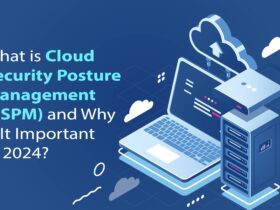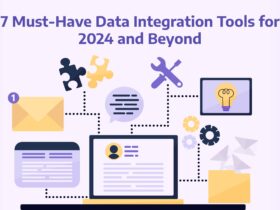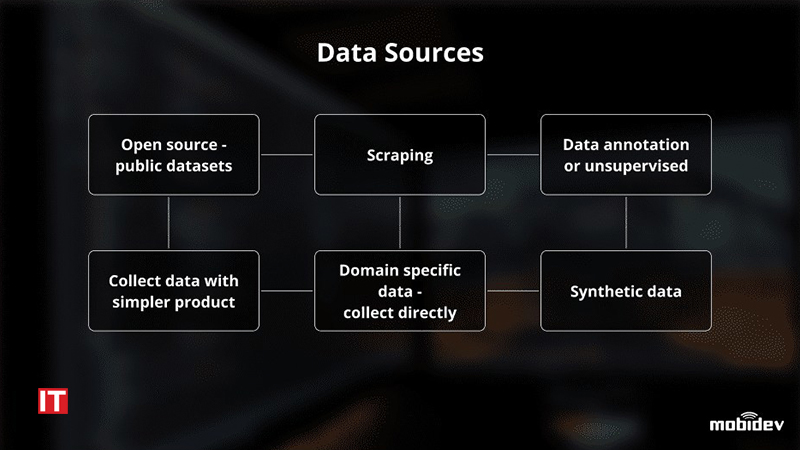AI project creation is much closer to scientific research than it is to classic software development. Engineers often start the journey by diving deep into the business case and available data, exploring existing approaches and models. MobiDev overviewed how a typical AI app development process grows in five stages.
1. BUSINESS ANALYSIS
To prepare input, we need to consider the business problem. Businesses address app development companies with the business problem, and it’s the job of the latter to find the intersection point of the business and the capability of AI.
The next stage is determination of the ML (Machine Learning) problem. This must take into account the technological capabilities of Artificial Intelligence subfields, such as Computer Vision, Natural Language Processing, Speech recognition, Forecasting, Generative AI, and others.
There are two main data types — specific and general. General data can be obtained from open-source data websites, so all we must do comes down to narrowing the scope of the target audience, putting emphasis on the particular region, gender, age, or other crucial factors. If the client has no data, yet intends to implement the AI component, there are six sources to draw data from.
Also Read: Exer Adds World-class Surgeons to its Team of Advisors and Announces Apps as FDA Medical Devices
A business owner may wonder whether the accuracy of the project would be sufficient. An AI engineer isn’t always ready to answer this question since it could be a new niche. PoC comes to the rescue, showing the minimal accuracy that can be obtained. Most remarkably, binary decisions are 50% accurate, just like a coin toss.
The next step after the first PoC can be a new iteration of PoC with further improvements or deployment. Creating a new PoC implies data addition, processing of cases, error analysis, etc. The number of iterations is conditional and depends on the project.
































